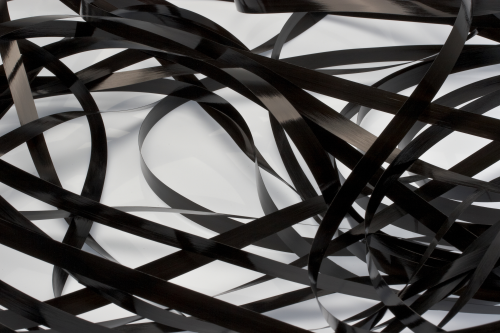




In July 2012 Frost & Sullivan published a report in which it said that the automotive carbon fibre composites market is likely to grow to US$95.50 million by 2017 at a compound annual growth rate (CAGR) of 30.6%. The study, Supply Chain Analysis of the Automotive Carbon Fiber Composites Market, reports that the market earned revenues of $14.70 million in 2010. Frost & Sullivan notes that fuel efficiency and low carbon emission regulations are playing a major role in raising demand for lightweight automotive composite components to replace metal parts.
Sandeepan Mondal, Senior Research Analyst, Frost & Sullivan, predicts that thermoplastics will have the advantage over thermosets because they are easier to recycle than thermosets. That is important because end of life legislation and the ability to recycle components are increasingly affecting the choice of materials.
The considerable demand for both types of materials has been a major factor in two significant acquisitions. The most recent was announced in January 2013 when TenCate, based in the Netherlands, said it would be buying Amber Composites. The Dutch company issued a statement in which it said: “The major portion of the global composite market consists of thermoset materials. The activities of TenCate in this market are mainly focused on aerospace, space and radome applications.”
TenCate added: “The acquisition of Amber Composites will help accelerate activities in the European market in the field of thermoset composite materials. As a result of the acquisition of Amber, TenCate increases its presence in the market for industrial and automotive composites, tooling materials and in the aerospace market in Europe, with both thermoset and thermoplastic composites.”
The second major acquisition affecting this sector occurred in 2012 when Cytec bought Umeco. Alexander Aucken, Global Automotive Manager, Cytec Industrial Materials, said: “the acquisition supports the focused growth targets for industrial materials, including automotive, which has significant potential for growth and value creation.”
Prior to the deal Cytec already had what he described as “a broad portfolio of both thermoset and thermoplastic composites.” Umeco’s capabilities are expected to help Cytec develop and expand its portfolio.
Aucken would not disclose details of Cytec’s strategy for the automotive thermoplastics and thermosets sector. However he says: “Our strategic plan for the industrial automotive market is very well developed and progressing well. Our alliance with Jaguar Land Rover is one part of the strategy. The automotive market is changing, and our long history of supplying high-end supercars and motorsport programmes with advanced composite materials is continuing, with new composites being developed to support the markets. Materials suited to high volume production manufacture, manufacturing processes and automation development with focused supply chain management, are fundamental for our future growth in the market, both with Jaguar Land Rover and the other automotive companies we are working with.”
Aucken believes that as the automotive industry gains experience of designing and manufacturing in composite materials its “use and structural integration aspirations will develop. Multi-material vehicle solutions are becoming the norm, with the right material being used in the right application and then joined together; i.e. matched die, thermoset composites (pressed prepregs and resin transfer moulding/RTM) and thermoplastic composites.”
Pros and cons
Being able to offer expertise in thermosets and thermoplastics is likely to help Cytec and TenCate significantly as some designers favour the former group of polymers while others prefer the latter type. Often when designing components it is a matter of assessing the pros and cons of each type of composite as Klaus Ritter, Marketing Manager, Huntsman Advanced Materials explains.
“Thermoplastic composites offer three main advantages,” says Ritter.
“Firstly, the increased impact resistance makes it difficult for thermoset composites to compete at the same level. Thermoplastics enable fast processing of pre-impregnated fibre materials and all importantly, the ability to re-shape products at any time. However, as thermoplastics are solid in their original state, fibre wet-out can be difficult. The additional processing steps this entails involves special techniques and equipment. This makes the costs for pre-impregnation relatively high, as do common requirements for high processing temperatures.”
Ritter continues: “Other disadvantages for thermoplastics include the propensity for creep behaviour and a high internal tension caused by thermal expansion differences between the thermoplastic and reinforced fibres after cooling down from typically very high processing temperatures. While less problematic for unidirectional reinforced parts, this is very problematic in three-dimensional complex shapes and also results in reduced surface quality.”
“While the processing times associated with thermoset composites are generally longer, faster processing methods are now available with out-of-autoclave high pressure RTM offering five minute cycles (injection time one minute, two minute cure) and less complex compression moulding operating at two minutes (down to one minute cure) per part,” he says.
According to Ritter epoxy resins reinforced with fibres produce thermoset composites with a mechanical performance and corrosion resistance properties “that are even better and significantly lighter than metal for structural applications. Good fibre wet-out capabilities and the relatively low processing temperatures associated with thermoset composites help to keep investment costs down and quality and mechanical performance at a premium.”
Selecting the right material depends on the application and circumstance. The decision depends on whether you want to make a cosmetic or structural component, need to accommodate special geometry or need to meet certain cost targets among other factors. |
Francis Defoor, global market segment leader transportation, Momentive Specialty Chemicals |
Ritter claims that as thermoset composites offer the lowest creep deformation available, they “bring form and function together to produce very light structural parts. A superior surface finish for both carbon look and painted surfaces on automotive parts can also be achieved. However, the question of toxicity is generally viewed as a con for several thermoset composite systems.”
According to Francis Defoor, global market segment leader transportation for Momentive Specialty Chemicals, asking which is better, thermoset or thermoplastic is “a false choice.” He says that it is “a more complex question than simply selecting a resin and a reinforcement type. Selecting the right material depends on the application and circumstance. The decision depends on whether you want to make a cosmetic or structural component, need to accommodate special geometry or need to meet certain cost targets among other factors.”
Defoor agrees that traditional thermosetting resins used to take a long time to cure, but now it is possible to achieve two-minute cycle times without sacrificing other characteristics. In a paper titled Advanced Thermosetting Resin Matrix Technology for Next Generation High Volume Manufacture of Automotive Composite Structures, Dr Roman W. Hillermeier, Dr Tareq Hasson, Lars Friedrich and Cedric Ball of Momentive, maintain that it is possible for epoxy composites to compete with traditional materials such as steel and aluminium.
In the paper’s abstract the authors claim that “… [the new] formulations are unique in that they provide a long enough injection window for a robust impregnation of the reinforcing fibres while still enabling an extremely short cure cycle. The results from [the] development show that structural composite components can be produced economically and in high volume using today’s innovative resin and process technology.”
With the introduction of the new fast-cure system Epikote™ Binder 05475/Epikure 05500 Curing Agent, Momentive claims it helps automotive manufacturers accomplish higher production rates, using the RTM or liquid compression moulding processes.
Ticona, the engineering polymers business of Celanese Corporation, believes that thermoplastic tapes are the key to reduced weight.
At JEC Americas 2012, Michael Ruby, technology launch manager, Ticona, delivered a technical paper on unidirectional glass-reinforced thermoplastic composite tapes. Titled Improving impact performance in D-LFT composites with UD-Tape based fabrics & laminates, the paper outlines a Ticona study of an automotive underbody shield (UBS) and describes ways to increase stiffness/strength and impact resistance of composites by using continuous strand, unidirectional (UD) glass reinforced thermoplastic composite tapes to produce woven fabrics as well as tailored blank laminates.
Ticona believes that when thermoplastic polymers are combined with continuous fibres composites can be created to produce light and tough components. Ticona said these can reduce weight, drive down costs and that they will perform in extreme environments.
The company has also developed an automotive underbody shield (UBS) manufactured from direct-long-fibre thermoplastic (D-LFT) composites. These are selectively reinforced with continuous fibre semi-finished fabrics and laminates to improve stiffness and impact performance. ♦
- Read Part 2 of this feature here.
This article was published in the March/April 2013 issue of Reinforced Plastics magazine.
The digital edition of Reinforced Plastics is distributed free of charge to readers who meet our qualifying criteria. You can apply to receive your free copy by completing the registration form.





